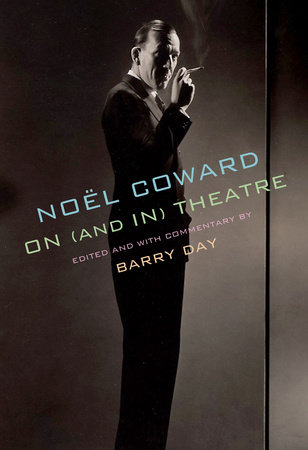 NOËL COWARD ON (AND IN) THEATRE
NOËL COWARD ON (AND IN) THEATRE
Edited by Barry Day
Knopf. 496 pages, $40.
IT’S HARD TO IMAGINE, in the age of Disney+, Amazon Prime, Netflix, Hulu, and HBO, that when the playwright Noël Coward (1899–1973) was growing up, the London stage was the center of the English-speaking world of entertainment—and such a pot of gold for writers that it even tempted Henry James to write plays. James was never able to figure out the art form that made playwrights like J. M. Barrie (Peter Pan) and Oscar Wilde rich and famous. He was, to his horror, booed during curtain calls at the premiere of his play Guy Domville—in the same theater that would host, not long thereafter, and to great applause, The Importance of Being Earnest.
But in Barry Day’s splendid compendium of interviews, letters, speeches, and table talk by Noël Coward (along with 138 illustrations), we travel back to a world in which Coward was the epitome of style, glamour, and theatrical success, particularly between the two world wars—a Renaissance man who wrote songs and plays, acted, and directed in a career that stretched from the heyday of George Bernard Shaw to that of the Angry Young Men like John Osborne (Look Back in Anger). Coward went from singing in church to performing in Las Vegas after his plays were no longer hits. What makes this book so interesting is the historical sweep—the fact that Coward’s mentors were George Bernard Shaw (who had to tell Coward to stop imitating his work and be himself) and Somerset Maugham (who, unlike Henry James, got rich writing plays for the London stage), whereas in his later years he was appraising the work of Harold Pinter and Edward Albee. Nothing is more interesting in Day’s book than the chapter in which Coward assesses the work of other playwrights, like Barrie, Maugham, T. S. Eliot, Eugene Ionesco, Samuel Beckett, and finally Osborne, Terrence Rattigan, Albee, Arthur Miller, Tennessee Williams, Eugene O’Neill, and Peter Shaffer.
Writing, Coward believed, was superior to acting because writing lasts and performances happen only once. And that single occasion was not always magical: “I have been having a terrible time with After the Ball,” he wrote about one of his plays, “mainly on account of Mary Ellis’s singing voice which, to coin a phrase, sounds like someone fucking the cat.” Alas: “She couldn’t get a laugh if she were to pull a kipper from her twat.”
Coward wrote dozens of plays, but the four comedies for which he’s best remembered are probably Hay Fever (1924), Private Lives (1930), Design for Living (1933), and Blithe Spirit (1941). He began performing as a choir boy, “but I hated doing this because the lack of applause depressed me.” Years after being cast at the age of ten in a children’s play called The Goldfish, he admitted: “I was a brazen, odious little prodigy, over-pleased with myself and precocious to a degree. … I was, I believe, one of the worst boy actors ever inflicted on the paying public.”
By the time he was in his twenties, however, he’d learned a lot, though most of his early plays were forgettable at best, until The Vortex (1924), a play about a young man addicted to drugs and a mother addicted to serial love affairs. The Vortex shocked the critics and made him a star. “Success,” he said, “took me to her bosom like a maternal boa constrictor.”
Andrew Holleran is the author of the novels Dancer from the Dance, Nights in Aruba, The Beauty of Men, and Grief.








